Sally Bowen Prange (1927 - 2007)
“One of the foremost contemporary ceramists who works in the Southeast, Sally Bowen Prange challenges North Carolina’s long tradition and love affair with functional ware. Indeed, her cylinders, bowls and teapots do have a utilitarian base but they are manipulated and altered to express a wide range of the artist’s personal experiences. These include studies in geology and natural science, a love of the outdoors and scuba diving.” — Elaine Levin
“Sally Prange begins with a pot, but she changes the traditional vessel shape into a symbol of majesty or religious solemnity and downright artistry.” — Blue Greenberg, Durham Morning Herald
Read this artist's biography
 Sally Bowen Prange continues to be one of the most important and influential ceramic artists in the Southeast today. She is beloved by collectors and fellow artists alike and the seventeen museum collections that house her work are a testament to the lasting value of her vision. Over a lifelong career, Prange pushed the boundaries between form and function. “I consider porcelain to be an aristocratic clay in all of its temperamental characteristics,” wrote Prange. “Its smooth, white texture is sensuous. The purity of the clay is absolutely necessary for the glazes and decorative techniques I use. I remain in awe of the profound ceramic practices developed in the ancient kilns of China where porcelain beauty reached its apex in the Song Dynasty.”
Sally Bowen Prange continues to be one of the most important and influential ceramic artists in the Southeast today. She is beloved by collectors and fellow artists alike and the seventeen museum collections that house her work are a testament to the lasting value of her vision. Over a lifelong career, Prange pushed the boundaries between form and function. “I consider porcelain to be an aristocratic clay in all of its temperamental characteristics,” wrote Prange. “Its smooth, white texture is sensuous. The purity of the clay is absolutely necessary for the glazes and decorative techniques I use. I remain in awe of the profound ceramic practices developed in the ancient kilns of China where porcelain beauty reached its apex in the Song Dynasty.”
Prange’s involvement with porcelain was linked to a long running interest and concern with Chinese culture. Her parents had lived in China for five years and planted the seeds of interest in the young artist. Sally’s affinity for this exotic culture grew as she made Chinese friends, read about China, and finally travelled to China in 1978.
Later works by Sally Prange fall into separate series, each representing unique directions of thought. “The variety enriches me and my work manner,” said Prange. “For each different piece I have intimate and distinct feelings as I work, sometimes a narrative in my mind.” Form is foremost, and the altered rim is ever-present but the surfaces vary with the whim of the artist. There is the “barnacle” surface, derived from Prange’s underwater experience as a Scuba Diver. There is the vibrant lustrous colors, worked abstractly on the surfaced of some vessels and inspired by the hues of corals, sponges, anenomes – the sea life of the underwater world. “The lyrical interplay of color and texture is unique to my palette as a ceramic artist.”
Permanent Collections
- Victoria and Albert Museum, London, England
- Smithsonian Institute
- The Museum of Art, Penn State University
- San Jose Museum of Art, San Jose, California
- J. Patrick Lannan Foundation of Contemporary Art, Florida
- Weatherspoon Galery, UNC Greensboro, North Carolina
- Museum of Art, University of Michigan
- Wachovia Bank, Winston Salem
- Museo Internazionale Della Ceramiche, Faenza, Italy
- Southern Progress Corporation, Birmingham, Alabama
- North Carolina Museum of History, Raleigh, North Carolina
- Everson Museum of art, Syracuse, New York
- Glaxo Wellcome Corporate Headquarters
- Princess Anne of Great Britain
- Tajami Technical School, Japan
- Ackland Art Museum, UNC Chapel Hill, North Carolina
- Joan Mannheimer collection, Des Moines, Iowa
- Blue Cross – Blue Shield, Durham, North Carolina
- North Carolina Museum of Art, Raleigh, North Carolina
- St. Bennett’s College, Oxford, England
- Queen Noor of Jordan

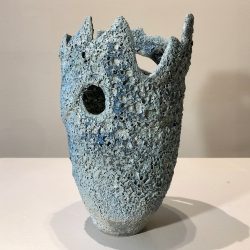
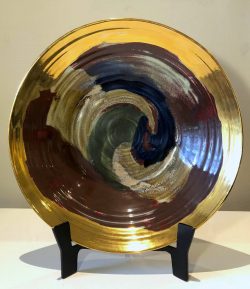
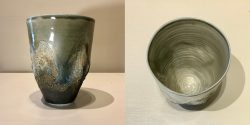
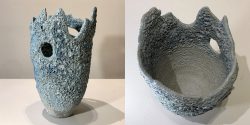
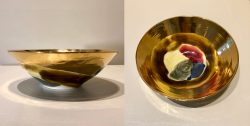
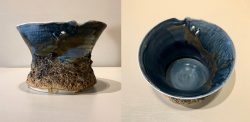
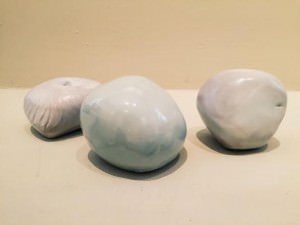
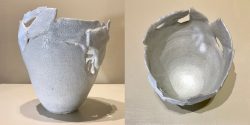 SOLD
SOLD
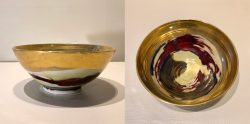 SOLD
SOLD